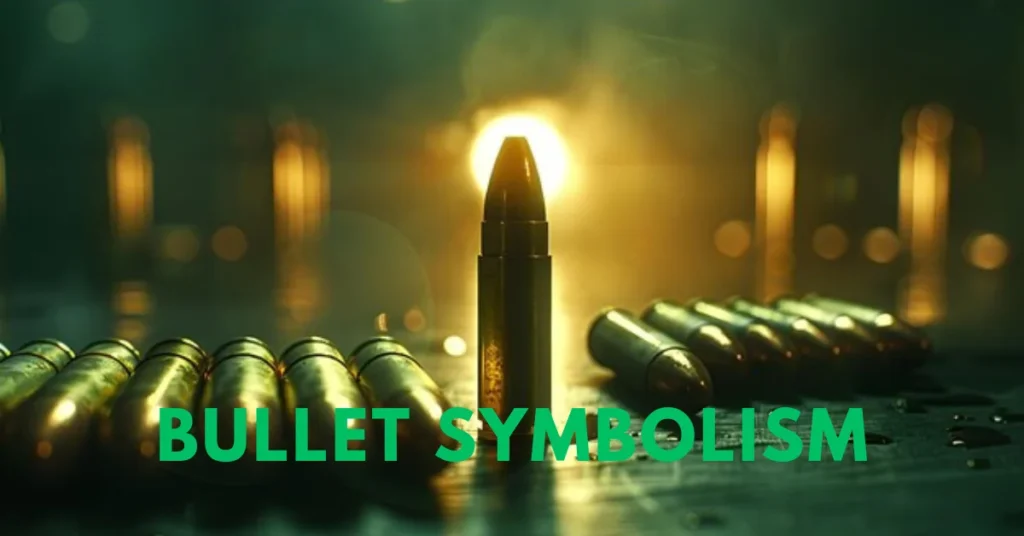Introduction to bullet symbolism
Bullets. They can evoke fear, awe, or even inspiration. This small yet powerful bullet symbolism has woven its way through the fabric of human history and culture. From ancient warfare to modern art, bullets have represented much more than just ammunition. They carry layers of meaning that transcend their physical form.
What do they symbolize in various societies? How have they been portrayed in literature and film? And how has our understanding of bullet symbolism evolved over time? Join us as we delve deep into this fascinating topic to uncover the transformative power behind these tiny projectiles. Whether you’ve pondered their significance or are simply curious about their impact on our world, there’s a lot to discover about what bullets truly represent.
Historical significance of bullets in different cultures and religions
Throughout history, bullets have held significant meaning across various cultures and religions. In many ancient societies, the act of shooting was viewed as a rite of passage or a test of skill. Bullets symbolized power and control over one’s fate.
In certain Native American tribes, for instance, the bullet represented both destruction and protection. The careful crafting of ammunition aligned with spiritual beliefs about balance in nature.
Meanwhile, in some Eastern philosophies, bullets were seen as metaphors for life’s fleeting moments—sharp yet momentary forces that could change one’s trajectory instantly.
Religious texts sometimes refer to weaponry indirectly to convey moral lessons about conflict and sacrifice. This multifaceted symbolism showcases how deeply embedded bullets are within our collective consciousness across time and space.
The use of bullets in literature and art
Bullets have found their way into literature and art, symbolizing conflict, power, and transformation. Writers often employ bullet imagery to evoke strong emotions or highlight critical moments in a narrative.
Consider the works of Hemingway or Faulkner. Their prose captures the rawness of human experience through stark references to violence and survival. The bullet serves as both a literal object and a metaphor for loss or change.
In visual arts, bullets manifest differently. Artists use them to comment on societal issues such as war, injustice, or identity crises. A sculpture made from spent cartridges can provoke thought about the consequences of violence.
These interpretations are not limited by context; they evolve with each artist’s intent and audience perception. This dynamic nature allows bullet symbolism to resonate across various mediums while sparking conversations that challenge our understanding of life itself.
Transformation of bullet symbolism in modern times
In modern times, bullet symbolism has undergone a significant transformation. Once primarily associated with violence and warfare, it now often represents resilience and empowerment. Many artists use bullets to challenge societal norms or comment on the human condition.
This shift can be seen in fashion statements where bullet designs symbolize rebellion against oppression. Here, they become not just objects of destruction but symbols of survival and strength.
Social media has also played a role in this evolution. Hashtags featuring bullet imagery are used to raise awareness about issues like gun control and mental health.
Through various lenses—artistic, social, or political—the narrative surrounding bullets continues to expand, reflecting deeper truths about society’s struggles and aspirations. The complexity behind their meaning invites dialogue rather than fear.
Impact on popular culture and media
Bullet symbolism has permeated popular culture in profound ways. From films to music, the imagery evokes a range of emotions and narratives. Iconic movies often use bullet motifs to represent danger, choice, or transformation.
In music videos, bullets can symbolize heartbreak or empowerment. Artists leverage this powerful imagery to convey their messages effectively and resonate with audiences on multiple levels.
Video games frequently incorporate bullets as symbols of conflict and resolution. Players engage with these symbols not just as weapons but as tools for storytelling.
Fashion also embraces bullet symbolism through accessories that challenge conventional ideas about beauty and strength. Jewelry featuring bullet designs offers a striking statement about resilience in the face of adversity.
The impact is undeniable; it shapes how we perceive violence, courage, and change within our society’s landscape. Each representation invites deeper reflection on its meaning beyond mere aesthetics.
Controversies surrounding the use of bullet symbolism
The use of bullet symbolism often stirs heated discussions. For many, bullets evoke feelings of fear and violence. They symbolize death and destruction in a world where gun violence is prevalent.
Yet, others argue that these symbols can represent empowerment or resistance. In art and literature, bullets may convey strength against oppression or the fight for justice.
Social media amplifies these debates. A single image can spark widespread outrage or admiration depending on its context. People interpret bullet imagery through their personal experiences, leading to diverse opinions on its appropriateness.
Moreover, some artists face backlash for using bullets in provocative ways. Critics question whether such representations trivialize real-life tragedies or serve as powerful commentaries about societal issues.
As conversations evolve, so does our understanding of what bullet symbolism means across different communities and cultures.
Conclusion: The power of symbols and their ability to shape our perceptions
The world of bullet symbolism is rich and complex. From ancient cultures to modern art, bullets have represented a myriad of ideas. They can symbolize power, danger, or even transformation. Their historical significance varies widely across different societies and religions, often reflecting the values and fears of those who wielded them.
In literature and art, bullets serve as powerful metaphors. They evoke emotions that range from fear to liberation. Contemporary interpretations have shifted significantly; today’s artists often use bullet symbolism to critique violence in society or explore themes of change.
Popular culture has embraced bullet imagery in films, music videos, and fashion. This pervasive presence shapes our understanding of violence and heroism alike—reinforcing certain narratives while challenging others.
However, this comes with controversy. The very symbol intended for empowerment can also perpetuate cycles of violence when misused or misunderstood.
Symbols hold immense power over our perceptions. Bullet symbolism exemplifies how an object can transcend its physical form to convey deeper meanings about life experiences and societal issues.
Understanding this duality invites us to reflect on how we interpret symbols around us—and perhaps inspires a more thoughtful engagement with the stories they tell.
FAQs
1. What is “bullet symbolism”?
Bullet symbolism refers to the deeper meanings and representations associated with bullets beyond their physical function as ammunition. In various cultures and contexts, bullets symbolize power, conflict, transformation, or even resistance, reflecting their impact on human experience and societal narratives.
2. How have bullets been symbolically significant in different cultures?
Throughout history, bullets have symbolized power, control, and rites of passage in many cultures. For instance, Native American tribes viewed bullets as symbols of balance between destruction and protection, while some Eastern philosophies saw them as metaphors for fleeting moments that can dramatically alter one’s path.
3. In what ways are bullets represented in literature and art?
In literature and art, bullets often symbolize conflict, change, or survival. Writers and artists use bullet imagery to evoke strong emotions, comment on societal issues, or explore human experiences, transforming these objects into powerful metaphors for broader themes.
4. How has bullet symbolism evolved in modern times?
Modern interpretations of bullet symbolism have shifted from representing violence to embodying resilience and empowerment. Today, bullets are used in fashion and art to symbolize resistance against oppression, and in social media to raise awareness about issues like gun control and mental health.
5. What controversies arise from the use of bullet symbolism?
The use of bullet symbolism can be controversial as it may evoke fear or be seen as trivializing real-life violence. While some view bullets as symbols of empowerment or resistance, others argue that their use in art and media can perpetuate negative narratives or exploit sensitive topics.







